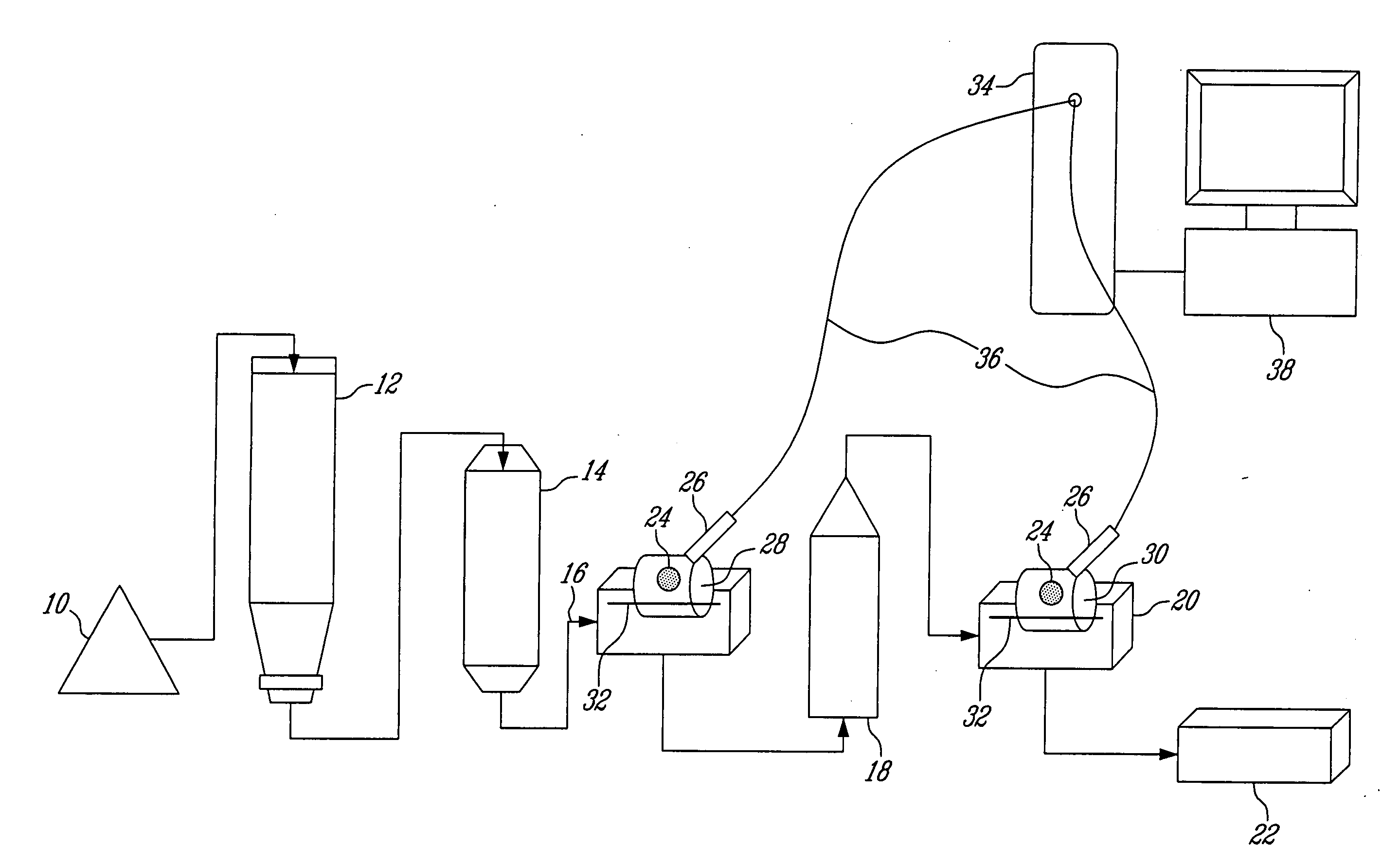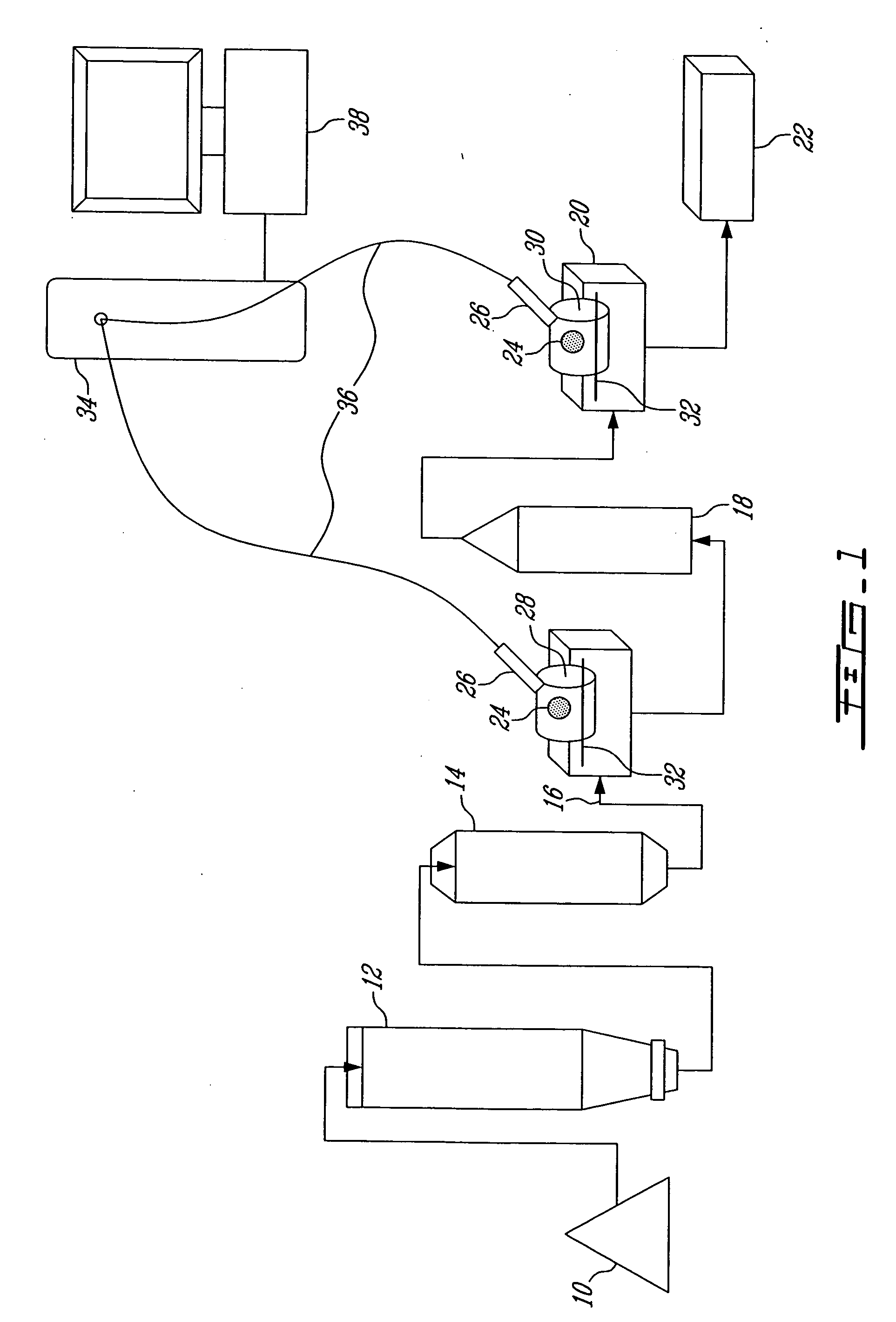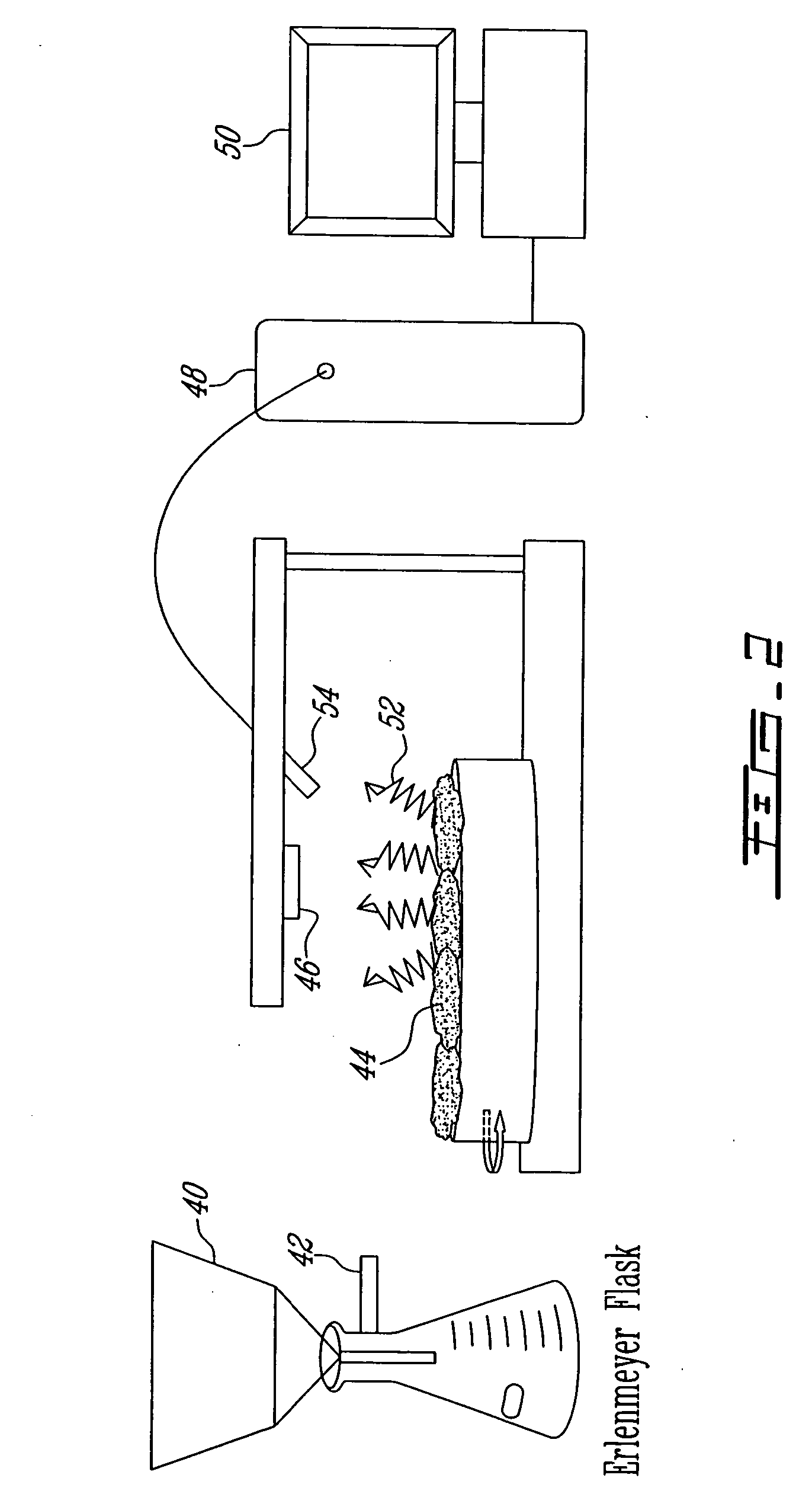Method for determining chemical pulp Kappa number with visible-near infrared spectrometry
a technology of visible-near infrared spectrometry and chemical pulp, which is applied in the direction of spectrometry/spectrophotometry/monochromators, optical radiation measurement, instruments, etc., can solve the problems of unresolved accuracy of on-line measurement of the kappa number of chemical pulp obtained from rapidly changing furnishings, unresolved problem for chemical pulp manufacturers, and more prevalent problem
- Summary
- Abstract
- Description
- Claims
- Application Information
AI Technical Summary
Benefits of technology
Problems solved by technology
Method used
Image
Examples
example 1
[0051] Pulp fibre samples were first hand-squeezed to remove excess water and placed on the sample tray. During data collection, the tray was spinning to provide better averages and improve statistical significance. FIG. 3 shows the results obtained for hemlock pulp sampled at the final brownstock washer and throughout the various washers of the bleach plant. Partial least squares multivariate calibration is used to generate the calibration using a combination of preferred spectral regions 350 nm to 750 nm and 1100 nm to 2400 nm. Six factors were used to generate the model shown yielding an R2 of 0.9999. Note that there are 10 data points at each concentration level, showing the extremely good reproducibility of the instant invention. The root mean square standard error of prediction (RMSEP) is 0.2 Kappa with a reproducibility of 0.05 Kappa. Furthermore, these results also indicate instant invention is capable of measuring the residual lignin content of fully bleached chemical pulp ...
example 2
[0052]FIG. 4 shows the results generated with the same dataset as above, but the calibration region is chosen to span only the NIR range of 1100 nm to 2500 nm, as indicated by the prior art. The results show inferior data, with a prediction error of ±2 Kappa which is much higher than in the results obtained in the present invention.
example 3
[0053]FIG. 5 shows the results obtained with the same dataset above, but calibrated in a spectral range of another prior art teaching, namely 850 nm to 1050 nm. As shown, the result obtained with the prior teaching again teaches away from the current invention since the errors in the predictions are in the order of ±4 Kappa.
PUM
| Property | Measurement | Unit |
|---|---|---|
| Fraction | aaaaa | aaaaa |
| Fraction | aaaaa | aaaaa |
| Time | aaaaa | aaaaa |
Abstract
Description
Claims
Application Information
 Login to View More
Login to View More - R&D
- Intellectual Property
- Life Sciences
- Materials
- Tech Scout
- Unparalleled Data Quality
- Higher Quality Content
- 60% Fewer Hallucinations
Browse by: Latest US Patents, China's latest patents, Technical Efficacy Thesaurus, Application Domain, Technology Topic, Popular Technical Reports.
© 2025 PatSnap. All rights reserved.Legal|Privacy policy|Modern Slavery Act Transparency Statement|Sitemap|About US| Contact US: help@patsnap.com



